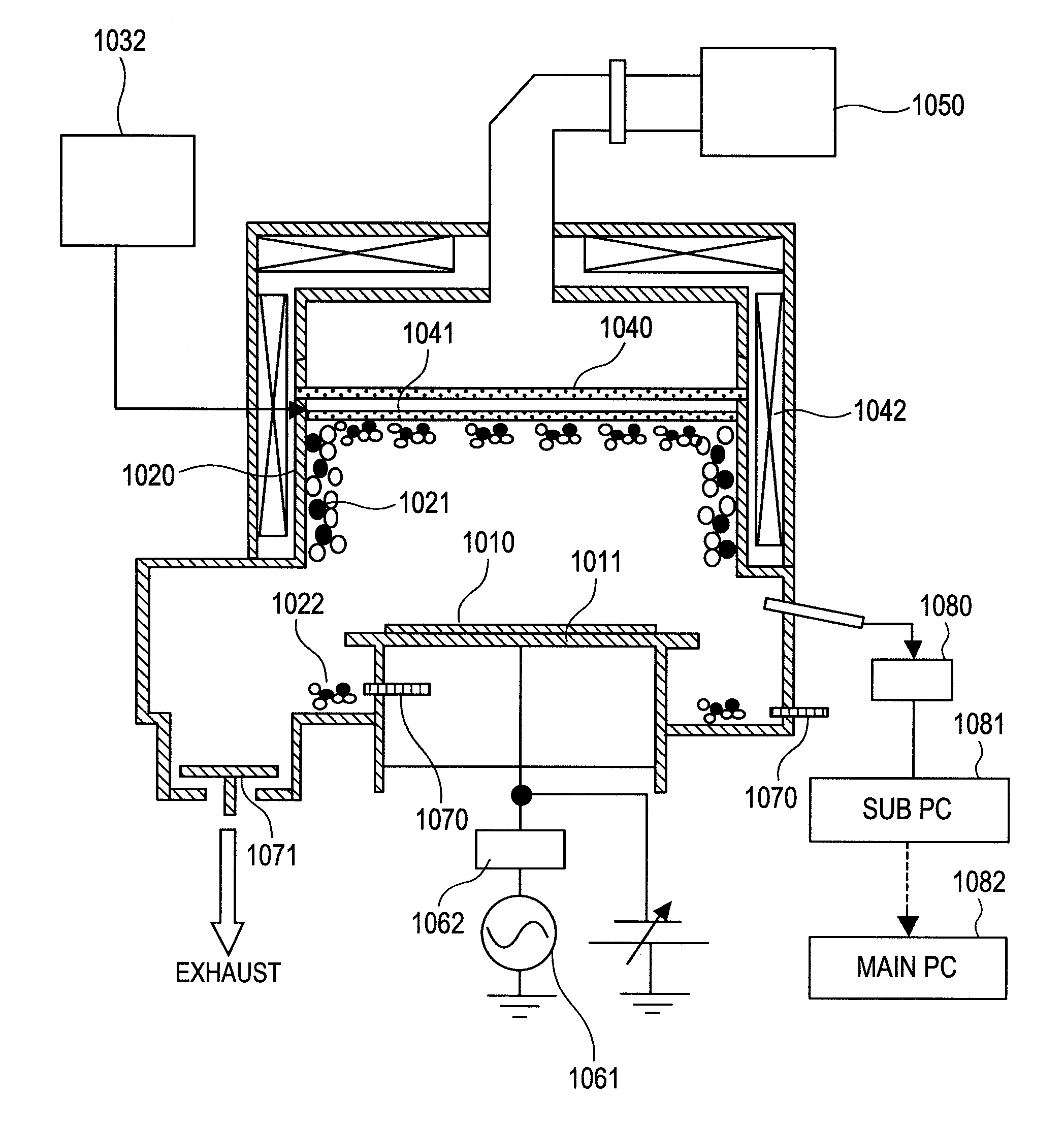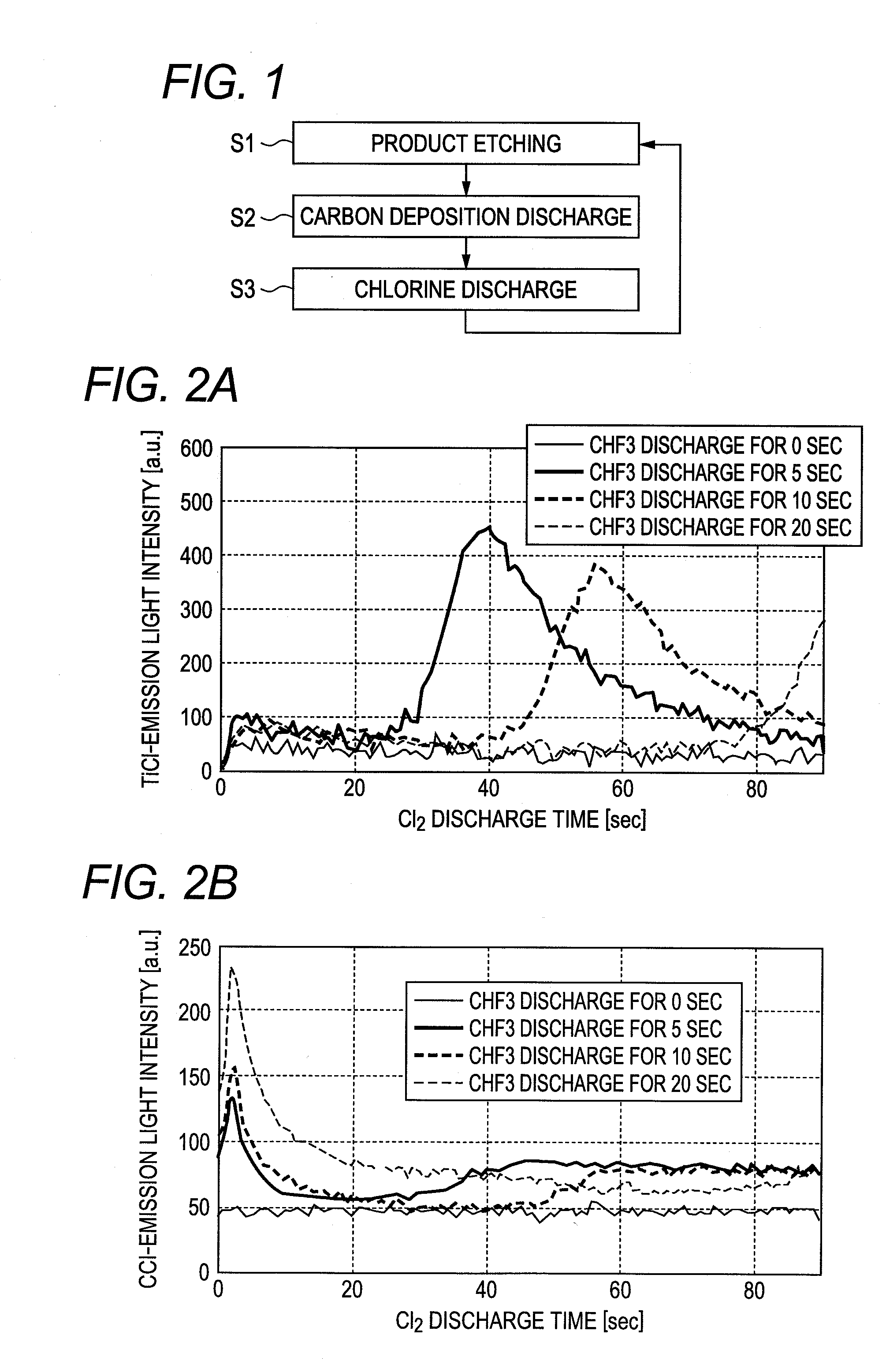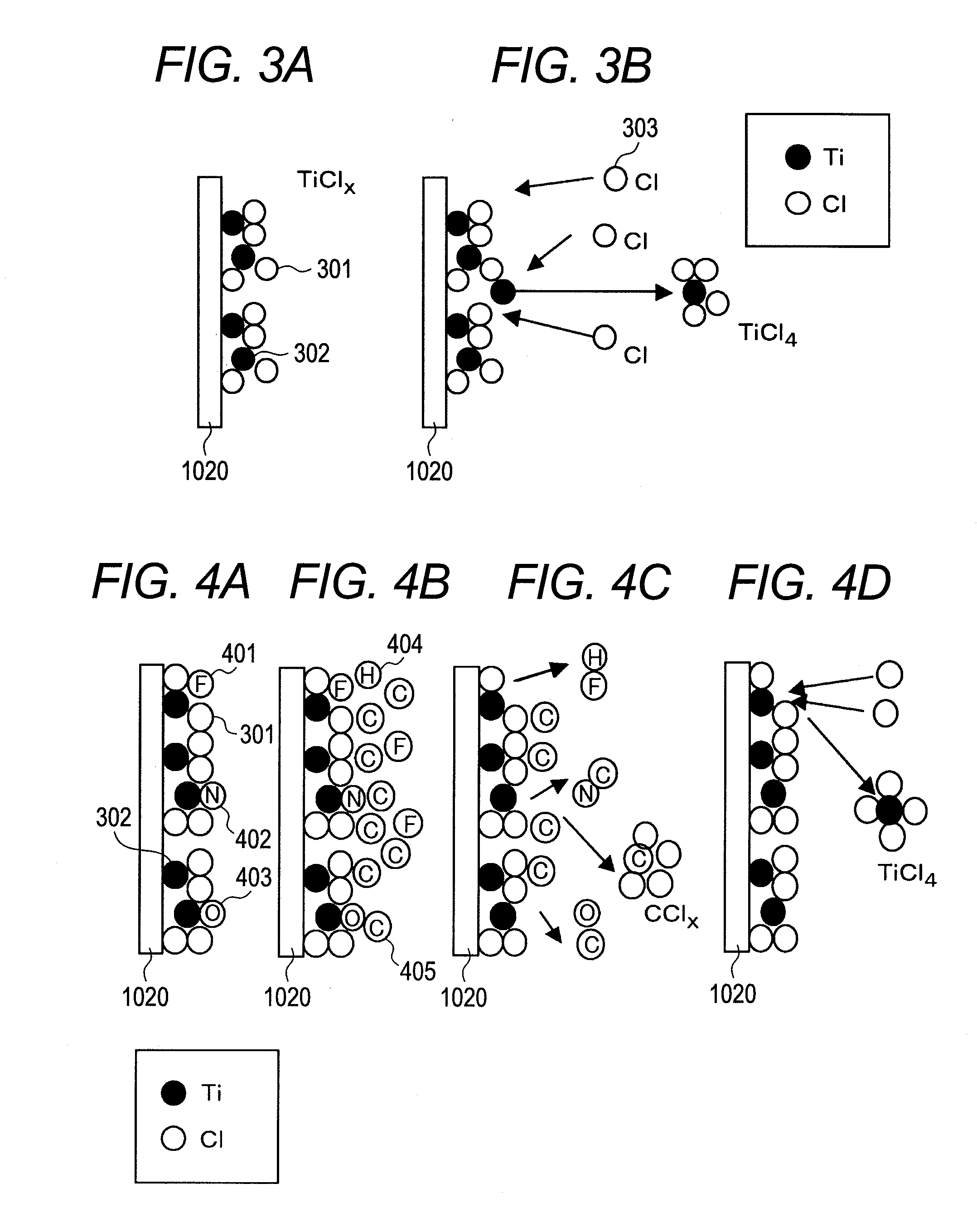Plasma processing method and plasma processing apparatus
a processing apparatus and plasma technology, applied in the field of plasma processing apparatus and plasma processing method, can solve problems such as the decrease of product yield, and achieve the effect of facilitating corrosion of chamber members and powerful oxidization ability
- Summary
- Abstract
- Description
- Claims
- Application Information
AI Technical Summary
Benefits of technology
Problems solved by technology
Method used
Image
Examples
first embodiment
[0031]A first embodiment of the present invention will be described in conjunction with FIG. 1 to FIG. 5 and FIG. 10. FIG. 10 is a schematic constitution diagram of a plasma processing apparatus employed in the present embodiment.
[0032]To begin with, the plasma processing apparatus employed in the present embodiment will be described below. The plasma processing apparatus (etching apparatus) shown in FIG. 10 includes an electrode 1011 on which a wafer 1010 is placed and which is disposed in a processing container, a gas feeder 1032, a top panel 1040, a shower plate 1041, an electromagnet 1042, a high-frequency waveguide 1050, a radiofrequency bias power supply 1061, a matching box 1062, a vacuum exhaust valve 1071 of a processing chamber, an emission spectroscope 1080, a unit in which an emission spectrum or data obtained by the emission spectroscope 1080 is stored (for example, a sub-personal computer (PC) 1081), and a main PC 1082 that controls the etching apparatus. The main PC 1...
second embodiment
[0044]A second embodiment of the present invention will be described in conjunction with FIG. 6, FIG. 7, and FIG. 9. Incidentally, information that has been described in relation to the first embodiment but will not be described in relation to the present embodiment can be applied to the present embodiment unless exceptional circumstances arise.
[0045]In relation to the first embodiment, a description has been made of that Ti deposited on the surface of the processing chamber can be cleaned out by performing the process S3 of chlorine-series discharge immediately after completion of the process S2 of carbon-series deposition discharge. However, if a Ti reaction by-product is thickly deposited on the surface of the processing chamber during product etching (process S1), or if the Ti reaction by-product is thickly deposited because the product etching has already been repeated plural times, the deposit of the Ti reaction by-product cannot be fully cleaned out by once performing the pro...
third embodiment
[0053]A third embodiment of the present invention will be described below in conjunction with FIG. 8. Incidentally, information that has been described in relation to the first or second embodiment but will not be described in relation to the present embodiment can be applied to the present embodiment unless exceptional circumstances arise.
[0054]FIG. 8 is a flowchart describing a procedure employed in a plasma processing method in accordance with the present embodiment. In the present embodiment, a process S2′ of oxygen discharge is inserted between product etching (process S1) and carbon-series deposition discharge (process S2) which are described in relation to the first embodiment by referring to FIG. 1). An effect of the oxygen discharge will be described below.
[0055]As seen from Table 1, comparison of binding energies between Ti and N, between Ti and Cl, between Ti and F, and between Ti and O with one another demonstrates that the binding energy between Ti and O is highest. In ...
PUM
| Property | Measurement | Unit |
|---|---|---|
| melting point | aaaaa | aaaaa |
| melting point | aaaaa | aaaaa |
| melting point | aaaaa | aaaaa |
Abstract
Description
Claims
Application Information
 Login to View More
Login to View More - R&D
- Intellectual Property
- Life Sciences
- Materials
- Tech Scout
- Unparalleled Data Quality
- Higher Quality Content
- 60% Fewer Hallucinations
Browse by: Latest US Patents, China's latest patents, Technical Efficacy Thesaurus, Application Domain, Technology Topic, Popular Technical Reports.
© 2025 PatSnap. All rights reserved.Legal|Privacy policy|Modern Slavery Act Transparency Statement|Sitemap|About US| Contact US: help@patsnap.com



